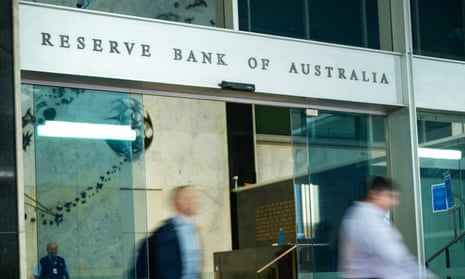A higher-than-forecast inflation result for the March quarter (and March itself) wasn’t the news Australian borrowers or the Albanese government had been wishing for.
Disappointment, however, needn’t usher in panic spasms either.
Economists, after all, had consistently underestimated how fast inflation would retreat since October. Sooner or later, we would get an upside surprise and, for a couple of the main measures, squinting was needed to spot the error.
Annual headline inflation of 3.6% was a tad above the 3.5% pace expected, but a neat half percentage point down from the December quarter. The quarterly rate ticked up to 1% from a 0.6% reading at the end of 2023 but expectations of 0.9% weren’t far off.
Sure, two inflation gauges that strip out some of more volatile price movers barely fell or were steady. Bad tidings.
Non-tradeable items, mostly services, were also 5% higher than a year earlier but that was down from a 6.2% pace in the December quarter. Tradeables, mostly goods, were actually 0.2% cheaper than three months earlier and a mere 0.9% more expensive on the year.
The Reserve Bank board, which meets on 6-7 May, will carefully assess the March numbers but it’s hard to imagine a major change of tack on interest rates. Between then and now, a few other statistics for March will help fill in more of the economic picture, such as retail trade and lending indicators.
The nine-member board, though, will probably give more weight to any sizeable changes in the central bank’s projections of how soon annual inflation will drop back to its target 2%-3% range.
The current forecasts have headline consumer price inflation dropping back to 3.3% by June – a result that remains reachable on the March results. Inflation should then track gradually lower to 3.1% by June 2025, finally sinking within the preferred rate by December 2025 at 2.8%.
The public won’t see those revised estimates until 7 May, after the RBA releases its verdict on the cash rate. There’s likely to be a fortnight of fulmination by pundits and the media.
No doubt much will be made about the “stickiness” of price increases, or the challenges of the “final mile” in slowing inflation. Take the US, for instance, where inflation has picked up, some will warn.
Monetary policy, of course, is just one of the levers determining inflation. Fiscal policy is the other main one (and Australia’s budget is much healthier than America’s).
after newsletter promotion
So far, all indications point to treasurer Jim Chalmers delivering a surplus of a similar size to last year’s – effectively a neutral result for inflation – when his budget lands on 14 May.
The RBA, of course, might wish the dates were reversed so its board met after the budget to be certain the Albanese government’s spending intentions were not excessive going into an election year. (That taxpayers get a $20bn-plus tax cut from 1 July has long been anticipated by the RBA even if the share of the spoils was revised earlier this year.)
The Treasury secretary, Steven Kennedy, is also an RBA board member, so few secrets are likely between the two bodies.
So what should borrowers worry about?
Surging transport fuel costs might be one for consumers and for inflation’s slide. As a net energy exporter though, Australia overall tends to do well when oil prices are propelled higher by troubles in the Middle East or elsewhere.
A rapid rise in unemployment, too, would be a concern if that meant mortgage holders couldn’t meet repayments. (The ratio remains blessedly low.)
Certainly, the March CPI numbers made it less likely we’ll see a cut in interest rates in 2024. If we got one because the economy tanked, we might rue that wish being met.
